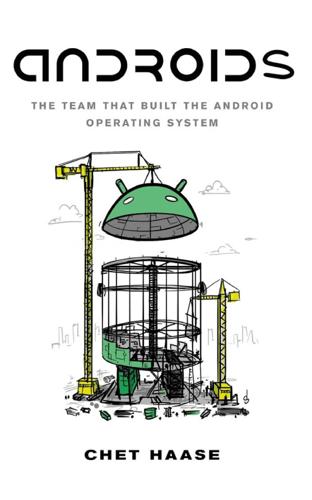
Androids: The Team That Built the Android Operating System
by
Chet Haase
Published 12 Aug 2021
She remained in that role, and was Andy’s personal admin, for many years.44 Tracey and Brian were the third and fourth people to join Android, and the first two non-founder employees. Andy McFadden and the Demo In May of 2005, Andy McFadden (known to the team as “Fadden”45) joined the company. Fadden had worked with Andy Rubin and Chris White at WebTV. When Andy [Rubin] was looking to hire someone else for his startup, he emailed Fadden: WTF? How are you? I want to hire you. It’s going to be huge™ When he was thirteen, Fadden was programming BASIC and assembly46 on an Apple II. So it was no surprise that he would later be one of the people on Android working on low-level code for Android’s Dalvik runtime.
…
A year later, Google opened a New York office and Dan signed on as the second employee. He worked on search and maps-related projects, eventually moving out to Mountain View. Meanwhile, Dan heard rumors, along with the rest of Google, about what was happening in that skunkworks project of Andy Rubin’s. “It was all very secretive. ‘Are they making Cameras? Andy Rubin — he was the guy at Danger, right?’” Dan had always been a mobile enthusiast. “I had been carrying a [Danger] Hiptop, for as long as there had been Hiptops and was a big fan. And I was a fan of mobile computing. I was that guy with the weird little mini-PC and radio system that could get on the Internet from anywhere, back when it was super crazy to do that.
…
So we met in Zurich for 2 weeks.” Both Google Talk and SMS (with MMS) made it in time for the 1.0 launch. 299 It’s true –you can look it up. On your phone. 300 Andy later joined Google, and was involved in some meetings with the Android team early on. 301 Andy Hertzfeld knew Andy Rubin; Hertzfeld was a co-founder of the company General Magic, where Andy Rubin worked in the early 90s. 302 Cat is a command in Unix which is short for “concatenate.” It is used to output contents of files. 303 COW = Cell On Wheels, a mobile cell site that exists for this exact kind of situation. 304 Android’s activity lifecycle is the system which controls the state of applications.

Dogfight: How Apple and Google Went to War and Started a Revolution
by
Fred Vogelstein
Published 12 Nov 2013
Google did cooperate somewhat—it didn’t make Larry Page and Sergey Brin available for an interview, but it has made many other executives available over the years for this project and/or for other stories I have written, including its former CEO Eric Schmidt and former Android boss Andy Rubin. The most important sources for this book weren’t officially sanctioned interviews anyway. They were the myriad engineers and executives who actually worked on these projects but have gone on to do other things. All of them were proud of the work they did and graciously spent hours with me making sure I recounted accurately what happened—many on the record. Although Steve Jobs and Google executives such as Eric Schmidt, Larry Page, Sergey Brin, and Andy Rubin get all the credit for building the iPhone, the iPad, and everything that has grown out of Google’s Android project, these people are the unseen heroes of Silicon Valley.
…
After joining Google and the Android team in Mountain View at the end of 2005 and spending a year writing thousands of lines of code out of a utility closet (he likes writing code in silence), he’d moved to Chapel Hill, North Carolina, the week before to help the team integrate a recent acquisition. But as he watched Jobs’s presentation from a run-down office above a T-shirt shop there, he knew his boss, Andy Rubin, would be thinking the same thing he was. He and Rubin had worked together for most of the previous seven years, when DeSalvo had been an engineer at Danger, Rubin’s first start-up. Rubin was one of the most competitive people DeSalvo knew. Rubin was not about to release a product that suddenly looked so dated.
…
“That’s when they [Android] started to test-drive phones and talk to T-Mobile about how much they were going to spend on marketing. That’s when you started to see that this thing [Android] was going to get bigger and bigger as it went along.” Up until then Android had been like Google’s mistress—lavished with attention and gifts but still hidden away. This secrecy wasn’t Schmidt’s, Page’s, or Brin’s idea. It was Andy Rubin’s. Rubin didn’t want anyone to know about his project. Like most entrepreneurs, he’s a control freak, and he believed that the only way he could succeed with Android was to run the operation as a stealth start-up inside Google. Google was only nine years old then, but for Rubin, the company was already too slow and bureaucratic.

Machines of Loving Grace: The Quest for Common Ground Between Humans and Robots
by
John Markoff
Published 24 Aug 2015
As founder of the Google car project, Thrun led the design of autonomous vehicle technology that one day may displace millions of human drivers, something he justifies by citing the lives it will save and the injuries it will avoid. The central topic of this book is the dichotomy and the paradox inherent in the work of the designers who alternatively augment and replace humans in the systems they build. This distinction is clearest in the contrasting philosophies of Andy Rubin and Tom Gruber. Rubin was the original architect of Google’s robot empire and Gruber is a key designer of Apple’s Siri intelligent assistant. They are both among Silicon Valley’s best and brightest, and their work builds on that of their predecessors—Rubin mirrors John McCarthy and Gruber follows Doug Engelbart—to alternatively replace or augment humans.
…
Like the secretive Google car project, the outlines of Google’s mobile robot business have remained murky. It is still unclear whether Google as a company will end up mostly augmenting or replacing humans, but today the company is dramatically echoing Shockley’s six-decade-old trainable robot ambition. The dichotomy between AI and IA had been clear for many years to Andy Rubin, a robotics engineer who had worked for a wide range of Silicon Valley companies before coming to Google to build the company’s smartphone business in 2005. In 2013 Rubin had left his post as head of the company’s Android phone business and begun quietly acquiring some of the best robotics companies and technologists in the world.
…
Years earlier, Rubin, who was also a devoted robot hobbyist, had helped fund Stanford AI researcher Sebastian Thrun’s effort to build Stanley, the autonomous Volkswagen that would eventually win a $2 million DARPA prize for navigating unaided through more than a hundred miles of California desert. “Personal computers are growing legs and beginning to move around in the environment,” Rubin said in 2005.4 Since then there has been a growing wave of interest in robotics in Silicon Valley. Andy Rubin was simply an early adopter of Shockley’s original insight. However, during the half decade after Shockley’s 1955 move to Palo Alto, the region became ground zero for social, political, and technological forces that would reshape American society along lines that to this day define the modern world.
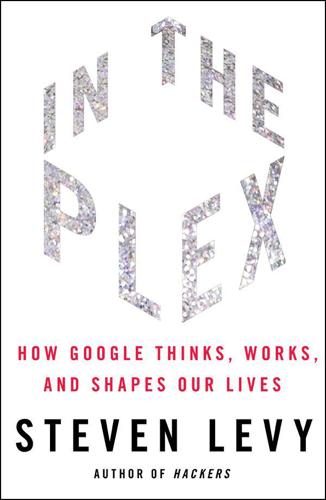
In the Plex: How Google Thinks, Works, and Shapes Our Lives
by
Steven Levy
Published 12 Apr 2011
As with other cases when Google had decimated an entire subindustry by offering a product for free, the company was anything but apologetic. “We don’t monetize the thing we create,” Andy Rubin says. “We monetize the people that use it. The more people that use our products, the more opportunity we have to advertise to them.” Surely one would have thought that the line Google would not cross would be going into competition with Android partners who made phones and sold them. But in mid-2009, while discussing ideas for a new Android model with the head of HTC, Andy Rubin asked, why not break the usual procedure where Google created and gave away the software, the handset maker designed and manufactured the hardware, and the carrier ran the device on its network and sold the device along with a contract?
…
And if all that is not enough, there is a concierge service; you can just send an email and they’ll run any errand you want for $25 an hour.” Seen another way, Google was simply a continuation of the campus life that many Googlers had only recently left. “A lot of Google is organized around the fact that people still think they’re in college when they work here,” says Eric Schmidt. Andy Rubin, who came to Google in 2004 when the company bought his mobile-technology start-up, guessed that since Brin and Page had never been in the workplace before founding Google, “they structured things from what they were familiar with, which was the PhD program at Stanford. You walk between buildings here and see people interacting like they would at a university.
…
PART FIVE OUTSIDE THE BOX The Google Phone Company and the Google TV Company 1 “They already hate us—what’s the downside?” You might say that the seeds of the Google Telephone Company took root right after the company moved out of its Palo Alto office to Mountain View in August 1999. The tenant moving into the space Google vacated was a start-up company named Danger. Danger’s cofounder, Andy Rubin, was a veteran of Apple in the early 1990s and a fabled start-up called General Magic. He’d started Danger to make a mobile communications device called the Sidekick, less a cell phone than a tiny computer—arguably the first smart phone with a measurable IQ. Instant messaging, not phone calls, was the Sidekick’s main purpose; you held it sideways, slid out a keyboard, and began thumb-punching IMs, which appeared in colorful pop-ups on a bright screen.

Brotopia: Breaking Up the Boys' Club of Silicon Valley
by
Emily Chang
Published 6 Feb 2018
Executives, she tweeted: Shawn Paul Wood, “Google Engineer Accused of Sexual Harassment Allegedly Does Nothing,” Adweek, March 9, 2015, http://www.adweek.com/digital/google-engineer-accused-of-sexual-harassment-allegedly-does-nothing. Andy Rubin, the mastermind: Reed Albergotti, “Android’s Andy Rubin Left Google After Inquiry Found Inappropriate Relationship,” The Information, Nov. 28, 2017, https://www.theinformation.com/androids-andy-rubin-left-google-after-inquiry-found-inappropriate-relationship. In 2016, longtime Google executive: Barry Schwartz, “Amit Singhal, The Head of Google Search, to Leave the Company for Philanthropic Purposes,” Search Engine Land, Feb. 3, 2016, https://searchengineland.com/amit-singhal-the-head-of-google-search-to-leave-the-company-for-philanthropic-purposes-241707.
…
I reported the accounts of multiple women who accused Shervin Pishevar—a prominent tech investor and major Democratic party donor—of sexual harassment and assault. The head of Amazon Studios, Roy Price, resigned after being accused of sexually harassing a producer and it was revealed that two top Google executives, Andy Rubin and Amit Singhal, left the company due to inappropriate behavior. Setting all this in motion was a young engineer at Uber, Susan Fowler, who accused her manager of propositioning her for sex. Her memo, remarkably, led to a companywide investigation of Uber’s bro culture that revealed forty-seven cases of sexual harassment, resulting in the departure of twenty employees.
…
“You probably don’t know and I probably don’t know when the ‘shake the shit out of [them]’ conversations happened, but they happened. There’s shame in that and they don’t want it to be their legacy. They think they are changing the world here, and they really are.” Still, the company didn’t always properly message how it dealt with bad behavior and, by some accounts, even rewarded it. Reports revealed that in 2014, Andy Rubin, the mastermind behind Google’s popular Android operating system, left after engaging in an inappropriate relationship with a subordinate. At the time, Rubin said he left on his own accord, and Google subsequently invested in Rubin’s new tech incubator, Playground. In response to the later allegations, a spokesperson for Rubin said that any relationship he had was consensual and did not involve someone who reported to him.
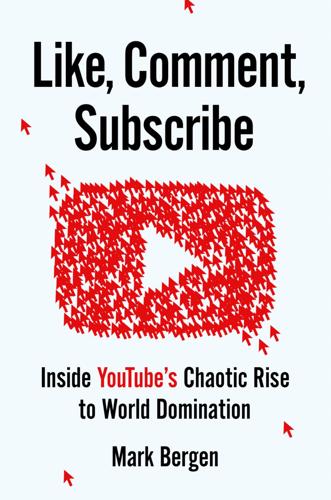
Like, Comment, Subscribe: Inside YouTube's Chaotic Rise to World Domination
by
Mark Bergen
Published 5 Sep 2022
GO TO NOTE REFERENCE IN TEXT opened her laptop: Alex Morris, “When Google Walked,” New York, February 5, 2019, https://nymag.com/intelligencer/2019/02/can-the-google-walkout-bring-about-change-at-tech-companies.html. I used details from Morris’s great account in the remainder of the chapter. GO TO NOTE REFERENCE IN TEXT found a link to a morning headline: Daisuke Wakabayashi and Katie Benner, “How Google Protected Andy Rubin, the ‘Father of Android,’ ” The New York Times, October 25, 2018, https://www.nytimes.com/2018/10/25/technology/google-sexual-harassment-andy-rubin.html. GO TO NOTE REFERENCE IN TEXT “like Joan of Arc or something”: Morris, “When Google Walked.” GO TO NOTE REFERENCE IN TEXT would later write: Claire Stapleton, “Google Loved Me, Until I Pointed Out Everything That Sucked About It,” Elle, December 19, 2019, https://www.elle.com/culture/tech/a30259355/google-walkout-organizer- claire-stapleton/.
…
At the time, Google could best be described as a collection of fiefdoms running various internet utilities: search, maps, browsers, ads. Most divisions were run by alpha executives, type As, who sat on Larry Page’s management council, the coveted “L Team.” No fiefdom was as insular and absolute as Android. Its leader, Andy Rubin, a brilliant programmer and robotics nerd, built his Google fiefdom by giving free operating software to the legion of phone makers trying to rival Apple. (In return, Android required phone makers to preload Google apps.) Android staff ate in their own special cafeteria at Google—with custom Japanese fare, Rubin’s favorite—and practiced a work culture, like Apple’s, maniacally centered on one man.
…
On Thursday, October 25, she left YouTube’s Chelsea office for her Brooklyn apartment, put her toddler to bed, poured a glass of red wine, and opened her laptop. She clicked to a company listserv for moms that she frequented and found a link to a morning headline from the Times about her company. Click. Google gave Andy Rubin, the creator of Android mobile software, a hero’s farewell when he left the company in October 2014. . . . What Google did not make public was that an employee had accused Mr. Rubin of sexual misconduct. The New York Times reported that a woman had accused Rubin, a longtime Google chieftain, of coercing her into oral sex in a hotel room.
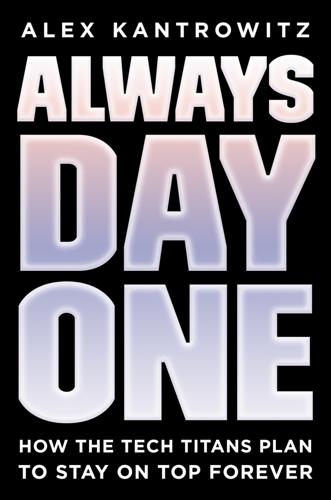
Always Day One: How the Tech Titans Plan to Stay on Top Forever
by
Alex Kantrowitz
Published 6 Apr 2020
BuzzFeed News, June 1, 2018. https://www.buzzfeednews.com/article/daveyalba/google-says-it-will-not-follow-through-on-pentagon-drone-ai. The Walkout, as it’s now known: Wakabayashi, Daisuke, and Katie Benner. “How Google Protected Andy Rubin, the ‘Father of Android’.” New York Times. New York Times, October 25, 2018. https://www.nytimes.com/2018/10/25/technology/google-sexual-harassment-andy-rubin.html. In an email to the moms group: Morris, Alex. “Rage Drove the Google Walkout. Can It Bring About Real Change at Tech Companies?” New York. New York Magazine, February 5, 2019. http://nymag.com/intelligencer/2019/02/can-the-google-walkout-bring-about-change-at-tech-companies.html.
…
And sure enough, something much bigger was right around the corner. Exodus A few months after the Maven protests, about twenty thousand Googlers walked off the job in offices across the globe. The Walkout, as it’s now known, took place a week after an October 2018 New York Times article reported that the company had paid Android founder Andy Rubin $90 million upon his exit from Google following sexual misconduct accusations. The article further reported that Google had protected others accused of similar behavior. If Maven could’ve been written off as an aberration, a rare moment when Googler dissent tapped into broader political movements and spilled out in public, the Walkout made clear the company was entering new territory.

Power, for All: How It Really Works and Why It's Everyone's Business
by
Julie Battilana
and
Tiziana Casciaro
Published 30 Aug 2021
Cicilline, Investigation of Competition in Digital Markets: Majority Staff Report and Recommendations, United States House of Representatives Subcommittee on Antitrust, Commercial and Administrative Law of the Committee of the Judiciary, 2020. 39 Fernando Belinchón and Moynihan Qayyah, “25 Giant Companies That Are Bigger than Entire Countries,” Business Insider, July 25, 2018, https://www.businessinsider.com/25-giant-companies-that-earn-more-than-entire-countries-2018-7. 40 Jenny Odell, How to Do Nothing: Resisting the Attention Economy (New York: Melville House, 2021). 41 Dell Cameron and Kate Conger, “Google Is Helping the Pentagon Build AI for Drones,” Gizmodo, June 1, 2018, https://gizmodo.com/google-is-helping-the-pentagon-build-ai-for-drones-1823464533. 42 Meredith Whittaker, in discussion with the authors, September 2020. 43 Scott Shane and Daisuke Wakabayashi, “ ‘The Business of War’: Google Employees Protest Work for the Pentagon,” New York Times, April 4, 2018, https://www.nytimes.com/2018/04/04/technology/google-letter-ceo-pentagon-project.html. 44 Reuters, “Google to Halt Controversial Project Aiding Pentagon Drones,” NBC News, June 2, 2018, https://www.nbcnews.com/news/military/google-halt-controversial-project-aiding-pentagon-drones-n879471. 45 Lulu Chang, “As Google Continues Its Work on a Military Project, a Dozen Employees Resign,” Digital Trends, June 2, 2018, https://www.digitaltrends.com/business/google-employees-letter-to-ceo-war/. 46 Davey Alba, “Google Backs Away from Controversial Military Drone Project,” BuzzFeed, June 1, 2018, https://www.buzzfeednews.com/article/daveyalba/google-says-it-will-not-follow-through-on-pentagon-drone-ai. 47 Sundar Pichai, “AI at Google: Our Principles,” Google, June 7, 2018, https://blog.google/technology/ai/ai-principles/. 48 Ryan Gallagher, “Google Plans to Launch Censored Search Engine in China, Leaked Documents Reveal,” The Intercept, August 1, 2018, https://theintercept.com/2018/08/01/google-china-search-engine-censorship/. 49 Find a copy of the open letter in the New York Times archive here: https://int.nyt.com/data/documenthelper/166-dragonfly-letter/ae6267f0128f4facd183/optimized/full.pdf#page=1. 50 “Open Letter: Google Must Not Capitulate on Human Rights to Gain Access to China,” Amnesty International, August 28, 2018, https://www.amnesty.org/en/latest/news/2018/08/open-letter-to-google-on-reported-plans-to-launch-a-censored-search-engine-in-china/. 51 Taylor Telford and Elizabeth Dwoskin, “Google Employees Worldwide Walk Out over Allegations of Sexual Harassment, Inequality within Company,” Washington Post, November 1, 2018, https://www.washingtonpost.com/business/2018/11/01/google-employees-worldwide-begin-walkout-over-allegations-sexual-harassment-inequality-within-company; Ryan Mac, “Disgraced Google Exec Andy Rubin Quietly Left His Venture Firm Earlier This Year,” BuzzFeed, October 13, 2019, https://www.buzzfeednews.com/article/ryanmac/andy-rubin-playground-global-google-quiet-departure. 52 Sam Byford, “Google Employees Worldwide are Walking Out Today to Protest Handling of Sexual Misconduct,” The Verge, November 1, 2018, https://www.theverge.com/2018/11/1/18051026/google-walkout-sexual-harassment-protest. 53 Telford and Dwoskin, “Google Employees Worldwide Walk Out.” 54 Daisuke Wakabayashi, “Google Ends Forced Arbitration for All Employee Disputes,” New York Times, February 21, 2019, https://www.nytimes.com/2019/02/21/technology/google-forced-arbitration.html. 55 “Google’s Project Dragonfly ‘Terminated’ in China,” BBC News, July 17, 2019, https://www.bbc.com/news/technology-49015516. 56 Johana Bhuiyan, “How the Google Walkout Transformed Tech Workers into Activists,” Los Angeles Times, November 6, 2019, https://www.latimes.com/business/technology/story/2019-11-06/google-employee-walkout-tech-industry-activism.
…
Amnesty International took up the cause too, publishing their own letter asking Google to stop the project, increase transparency about its position on censorship, and guarantee protections for whistleblowers.50 As protests against Dragonfly continued, another bombshell exploded: In October 2018, news broke that Andy Rubin, the creator of the Android mobile operating system, had been paid $90 million when he left Google in 2014 after sexual assault allegations against him were deemed credible.51 Although Google’s leadership might well have used the huge payout as a faster and less litigious way to get an unwelcome senior employee out of the company, in the midst of the international reckoning about sexual harassment and gender discrimination spurred by the #MeToo movement, Google employees found the revelation that the company had allegedly protected a predator in their own ranks unconscionable.

The Big Nine: How the Tech Titans and Their Thinking Machines Could Warp Humanity
by
Amy Webb
Published 5 Mar 2019
Nitasha Tiku, “Google’s Diversity Stats Are Still Very Dismal,” Wired, August 14, 2018, https://www.wired.com/story/googles-employee-diversity-numbers-havent-really-improved/. 7. Daisuke Wakabayashi and Katie Benner, “How Google Protected Andy Rubin, the ‘Father of Android,’” New York Times, October 25, 2018, https://www.nytimes.com/2018/10/25/technology/google-sexual-harassment-andy-rubin.html. 8. David Broockman, Greg F. Ferenstein, and Neil Malhotra, “The Political Behavior of Wealthy Americans: Evidence from Technology Entrepreneurs,” Stanford University Graduate School of Business, Working Paper No. 3581, December 9, 2017, https://www.gsb.stanford.edu/faculty-research/working-papers/political-behavior-wealthy-americans-evidence-technology. 9.
…
Some Googlers feel that the training has been more perfunctory than productive, with a Black female employee explaining that the training focused on “interpersonal relationships and hurt feelings rather than addressing discrimination and inequality, which signals to workers that diversity is ‘just another box to check.’”6 Yet in the same years as this training was taking place, Google was rewarding bad behavior among its leadership ranks. Andy Rubin, who created Google’s flagship Android mobile operating system, had been asked to resign after a female staff member made a credible claim that he’d coerced her into oral sex. Google paid Rubin $90 million to walk away—structured in monthly payouts of $2.5 million for the first two years and $1.5 million every month for the following two years.

Don't Be Evil: How Big Tech Betrayed Its Founding Principles--And All of US
by
Rana Foroohar
Published 5 Nov 2019
Bezos himself was embroiled in a sordid sexting scandal in which he sent multiple penis selfies to a Fox TV personality, an episode that coincided with the end of his marriage and resulted in an ugly, high-profile legal battle with the publication that broke the story, the National Enquirer, which Bezos claimed had tried to extort him.11 My experience in business reporting tells me that incidents like these, more often than not, signal something amiss in a company’s culture—particularly when they come in multiples. That was my first thought when reading in late 2018 about how Google paid the founder of its Android mobile system, Andy Rubin, a $90 million bonus as he was leaving the company, while attempting to keep quiet about one of the reasons he was leaving—a sexual misconduct claim. The details of it all had an ick factor that landed the story on the front page of The New York Times.12 But it was a line in a leaked internal email response to the article, from Google chief executive Sundar Pichai to the Google staff, that really got my attention: “In the last two years, 48 people have been terminated for sexual harassment, including 13 who were senior managers and above.
…
We as consumers perceive their services to be free, but in reality, we are paying—unwittingly—not only with our attention but our data, which they go to great lengths to capture and then monetize.8 What is even more alarming, however, is how vulnerable their complex and opaque digital advertising systems are to exploitation, no matter how many people they put on the problem. The very same week that Google’s $90 million Andy Rubin sex scandal hit the papers, there was news of another and perhaps even more telling debacle: 125 Android apps and websites were subject to a multimillion-dollar scam. Essentially, fraudsters acquired legitimate apps—many targeted at kids, including a number of popular games, a selfie app, a flashlight app, and more—from their developers (paid for in Bitcoin) and sold them to shell companies in Cyprus, Malta, the British Virgin Islands, Croatia, Bulgaria, and elsewhere.
…
Jeff Bercovici, “Peter Thiel Wants You to Get Angry About Death,” Inc., July 7, 2015; Tad Friend, “Silicon Valley’s Quest to Live Forever,” The New Yorker, March 27, 2017. 10. Marco della Cava et al., “Uber’s Kalanick Faces Crisis over ‘Baller’ Culture,” USA Today, February 24, 2017. 11. Jeff Bezos, “No Thank You, Mr. Pecker,” Medium, February 7, 2019. 12. Daisuke Wakabayashi and Katie Benner, “How Google Protected Andy Rubin, the ‘Father of Android,’ ” The New York Times, October 25, 2018. 13. Aarian Marshall, “Elon Musk Reveals His Awkward Dislike of Mass Transit,” Wired, December 14, 2017. 14. Levy, In the Plex, 121. 15. Levy, In the Plex, 13. 16. Ken Auletta, “The Search Party,” The New Yorker, January 6, 2008. 17.

Digital Wars: Apple, Google, Microsoft and the Battle for the Internet
by
Charles Arthur
Published 3 Mar 2012
Certainly for Palm, we will reach into many more companies with these devices.’4 Analysts agreed: in February 2006, Nick Jones, an analyst at the industry research company Gartner, declared that Windows Mobile had more than 10,000 developers working on applications, ‘far more than any rival mobile operating system’, ahead of Symbian (and Nokia) and that of Research In Motion (RIM), the Canadian maker of the BlackBerry.5 Android The September 2005 announcement of the Microsoft–Palm tie-up grabbed the interest of one particular Google employee: Andy Rubin, a former Apple employee, whose second mobile start-up, called Android, had been purchased by Google the month before. (He had left his first mobile start-up, Danger, which produced the Hiptop phone and would later be sold to Microsoft.) Larry Page in particular saw mobile as the future; Eric Schmidt was less convinced.
…
Everyone assumed power density [the amount of energy stored in a battery of a given size] was nowhere even close to what was needed for general computing, that a fully featured browser and heavy-duty internet services were impossible due to [network] bandwidth and latency… even Danger [the company Andy Rubin had founded and then left] was just working on a better BlackBerry. Another told me that the quarterly ‘vision meetings’ held by co-chief executive Mike Lazaridis ‘were normally quite unremarkable… They were very much “We don’t need to do anything special, because people love us and aspire to owning our devices.”’
…
The vice-president of China Mobile – the biggest carrier in the world – said that an open mobile platform would accelerate China’s smartphone adoption. Page and Brin emphasized that this was not a ‘Google Phone’: it was a Google phone platform. ‘Is there a Google phone coming?’ asked USA Today’s writer. Andy Rubin replied: ‘Another way to think about the G-phone is that there will be thousands of Google phones – some you like, some you don’t.’ The OHA was a method to build a phone that would have Google at its core – in search, apps and so on. It was part of a dual mobile strategy on phones: get apps such as Google Maps on to phones through ‘handset partnerships’ (principally Apple); and provide ‘a whole new mobile experience’.
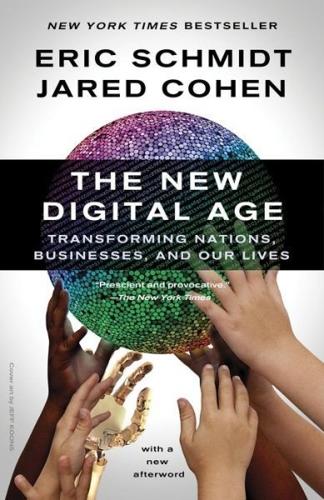
The New Digital Age: Transforming Nations, Businesses, and Our Lives
by
Eric Schmidt
and
Jared Cohen
Published 22 Apr 2013
What was once a sophisticated and lucrative violent activity (earning insurgents thousands of dollars) had become routine, an option for anyone with a bit of initiative willing to be paid in cigarettes. If an insurgent’s mobile-phone-triggered IED is now the equivalent of a high school science project, what does that tell us about the future? These “projects” are an unfortunate consequence of what the Android creator Andy Rubin describes as the “maker phenomenon” in technology, which outside the terrorism context is often applauded. “Citizens will more easily become their own manufacturers by piecing together versions of today’s products to make something that had previously been too hard for an ordinary citizen to build,” Rubin told us.
…
Personal interviews proved invaluable, and we want to thank in particular former secretary of state Henry Kissinger; President Paul Kagame of Rwanda; Prime Minister Mohd Najib Abdul Razak of Malaysia; Mexico’s former president Felipe Calderon; the Saudi prince Al-Waleed bin Talal; Ashfaq Parvez Kayani, Chief of Army Staff of the Pakistan Army; Shaukat Aziz, former prime minister of Pakistan; WikiLeaks’ cofounder Julian Assange; Mongolia’s former prime minister Sukhbaatar Batbold; the Mexican businessman Carlos Slim Helú; Prime Minister Hamadi Jebali of Tunisia; the former DARPA administrator turned Googler Regina Dugan; Android’s senior vice-president Andy Rubin; Microsoft’s chief research officer, Craig Mundie; Vodafone’s CEO, Vittorio Colao; the Brookings senior fellow Peter Singer; former Mossad chief Meir Dagan; Taj Hotels’ CIO, Prakash Shukla; and the former Mexican secretary of the economy Bruno Ferrari. We had a number of friends, colleagues and family who allowed us to impose on them at various stages of the writing process.
…
What was once a sophisticated and lucrative violent activity: One of the authors first learned about this while speaking on a panel with Jonathan Powers at Johns Hopkins School of Advanced International Studies in 2005. The authors have since corroborated this data point with additional anecdotes from civilian and military officials who have been working on or deployed in Iraq over the past decade. “maker phenomenon”: Andy Rubin in discussion with the authors, February 2012. Somalia’s al-Shabaab insurgent group on Twitter: Will Oremus, “Twitter of Terror,” Slate, December 23, 2011, http://www.slate.com/articles/technology/technocracy/2011/12/al_shabaab_twitter_a_somali_militant_group_unveils_a_new_social_media_strategy_for_terrorists_.html.

The Economic Singularity: Artificial Intelligence and the Death of Capitalism
by
Calum Chace
Published 17 Jul 2016
(Since you ask, they are Boston Dynamics - purveyor of the famous Big Dog and Atlas models - Bot and Dolly, Meka, Holomni, SCHAFT, Redwood, Industrial Perception, and Autofuss.) Google also announced that the new division which owned them would be run by Andy Rubin, who created a huge global business with the Android phone platform. A year later, in October 2014, Andy Rubin left Google to found a technology startup incubator, which prompted observers to remark that Google had been surprisingly quiet about its collection of robot makers. In early 2016, rumours spread that Google was considering selling Boston Dynamics, the creator of Big Dog and Atlas, two of the world’s most impressive robots.
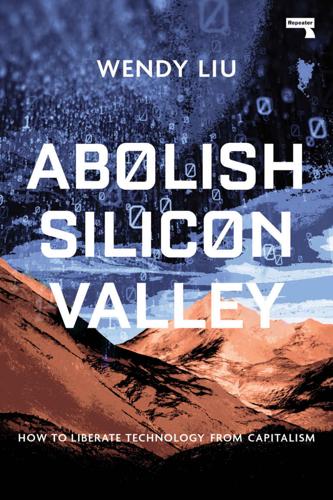
Abolish Silicon Valley: How to Liberate Technology From Capitalism
by
Wendy Liu
Published 22 Mar 2020
See, for example, “Google Plans Not to Renew Its Contract for Project Maven, a Controversial Pentagon Drone AI Imaging Program” by Kate Conger for Gizmodo, published June 1, 2018, at https://gizmodo.com/google-plans-not-to-renew-its-contract-for-project-mave-1826488620. 17 “Inside Google’s Shadow Workforce”, by Mark Bergen and Josh Eidelson, published July 25, 2018, at https://www.bloomberg.com/news/articles/2018-07-25/inside-google-s-shadow-workforce. 18 For details, see Eric Blanc’s book Red State Revolt: The Teachers’ Strike Wave and Working-Class Politics (Verso, 2019). 19 For details on the demands of the walkout, see the letter posted by the core organisers of the walkout at The Cut, at https://www.thecut.com/2018/11/google-walkout-organizers-explain-demands.html. 20 See “How Google Protected Andy Rubin, the ‘Father of Android’”, by Daisuke Wakabayashi and Katie Benner, for the New York Times, published October 25, 2018, at. https://www.nytimes.com/2018/10/25/technology/google-sexual-harassment-andy-rubin.html. 21 For coverage of the strike’s demands, see, for example, “Marriott workers just ended the largest hotel strike in US history” by Alexia Fernández Campbell for Vox, published December 4, 2018, at https://www.vox.com/policy-and-politics/2018/12/4/18125505/marriott-workers-end-strike-wage-raise.
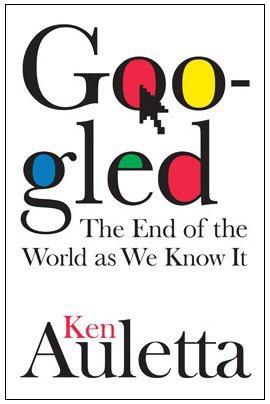
Googled: The End of the World as We Know It
by
Ken Auletta
Published 1 Jan 2009
Delaney, Wall Street Journal, April 18, 2008, and Miguel Helft, New York Times, April 18, 2008. 205 Google hogged three quarters of all U.S. search: search marketing firm Efficient Frontier, quoted in BusinessWeek, May 19, 2008. 205 one of every three videos viewed online: from ComScore as reported by the Jim Dalrymple, IDG News Service, March 17, 2008. 206 The impact of this new medium: author interview with Steve Grove of YouTube, April 15, 2008. 206 “they’ll never make money”: author interview with Irwin Gotlieb, June 2, 2008. 206 “start working on monetizing it”: author interview with Eric Schmidt, March 26, 2008. 206 “highest priority”: Eric Schmidt, CNBC interview, April 30, 2008. 207 the iPhone delivered fifty times more search queries: Google presentation by Deepak Anand, mobile marketing manager, May 2008. 207 “As compared to the internet model”: Larry Page, October 10, 2007. 207 Google’s mobile quarterback was Andy Rubin: author interview with Andy Rubin, March 24, 2008. 208 “Since we think we have the most reliable network”: author interview with Ivan Seidenberg, February 19, 2008. 210 “they’ve provoked the bear”: author interview with Ivan Seidenberg, February 19, 2008. 210 At Apple board meetings: author interview with Eric Schmidt, March 26, 2008. 210 “We had the very good fortune”: tape watched by author of All Hands staff meeting addressed by Eric Schmidt, April 28, 2008. 211 “a planning process”: author interview with Eric Schmidt, September 12, 2007. 211 It was still talking to cable companies: author interview with Eric Schmidt, April 16, 2008. 211 if the cable companies could get together they would have “a Google-type ability”: author interview with Jeff Bewkes, April 10, 2006. 212 “The browser becomes the operating system”: author interview with Christophe Bisciglia, September 19, 2008. 212 YouTube was silenced for several hours on February 24, 2008 : Jane Spencer, “How a System Error in Pakistan Shut YouTube,” Wall Street Journal, February 26, 2008. 213 In its annual letter to shareholders: annual Google founders’ letter, March 26, 2008. 213 They pledged to divert: Dr.
…
They were frustrated that telephone companies, not consumers, decided which applications would appear on their mobile phones. “As compared to the Internet model, where we’ve been able to make software that basically is able to run everything and works for people pretty well, it’s been very difficult to do that on phones,” Page said. Google’s mobile quarterback was Andy Rubin. A former Microsoft employee, Rubin had left to cofound a mobile software company called Android, which Google had acquired in 2005. As the senior director of mobile platforms for Google, Rubin set out to make Android an open-source operating system—open to improvements from any software designer because the source code was visible, not proprietary, and peers could collaborate to offer and improve different software applications.
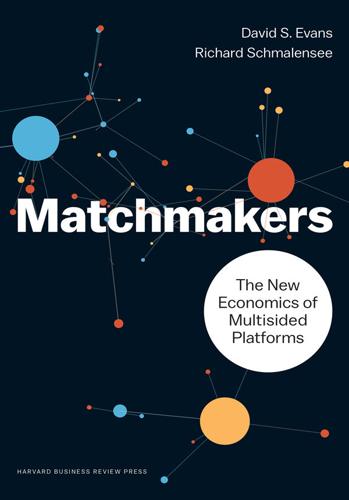
Matchmakers: The New Economics of Multisided Platforms
by
David S. Evans
and
Richard Schmalensee
Published 23 May 2016
If people started using mobile phones instead of personal computers, Google, and everyone else who had become accustomed to a smooth experience online, would have trouble. Google was also concerned that Microsoft would extend its dominance in personal computers to mobile phones. In the spring of 2005, Page met with Andy Rubin, an entrepreneur who had a vision for cleaning up the mess in the mobile phone industry and had started developing a platform to do so.34 The idea was to create a mobile operating system provided under an open source license so that anyone could take it and modify it, and any handset maker could install it for free.
…
GSMA Intelligence, “Connections Excluding Cellular M2M: Q2 2007.” 33. Much of this section is based on Daniel Roth, “Google’s Open Source Android OS Will Free the Wireless Web,” Wired, June 23, 2008, http://archive.wired.com/techbiz/media/magazine/16-07/ff_android?currentPage=all. 34. Larry Page and Sergey Brin had met Andy Rubin and heard about his mobile vision when Rubin gave a talk to an engineering class at Stanford in 2002. John Markoff, “I Robot: The Man Behind the Google Phone,” New York Times, November 4, 2007, http://www.nytimes.com/2007/11/04/technology/04google.html?pagewanted=all. 35. Vogelstein, Dogfight, 46–48. 36.

Blitzscaling: The Lightning-Fast Path to Building Massively Valuable Companies
by
Reid Hoffman
and
Chris Yeh
Published 14 Apr 2018
You can acquire an innovative technology and team, and then feed them with massive resources as they scale. This is how Google blitzscaled Android. Google acquired Android in 2005, when it was still just a small, twenty-two-month-old start-up that was working on a new operating system for mobile phones. Google let Android founder Andy Rubin hire additional engineers to complete the product, while using its market power and reputation to establish the Open Handset Alliance, a consortium to promote Android that included hardware makers Samsung, HTC, and Motorola, carriers Sprint and T-Mobile, and chipmakers Qualcomm and Texas Instruments.
…
As a result, a blitzscaling project needs to be insulated from the rest of the company so that the executive in charge can run it effectively. The classic example is Steve Jobs’s approach to managing the original Macintosh team, which had separate offices that were off-limits to regular Apple employees. More recently, Larry Page applied this same technique to Android by allowing Andy Rubin’s team to work in separate offices—Google employee badges didn’t grant access to Android offices—and adopt different hiring practices from those of the parent company. Much the same was true for the PlayStation project at Sony, the Kindle project at Amazon, and the Watson team at IBM. BLITZSCALING BEYOND BUSINESS While we’ve focused on the application of blitzscaling in the world of business, the basic principle of sacrificing efficiency for speed in the face of uncertainty can be applied in just about any context.
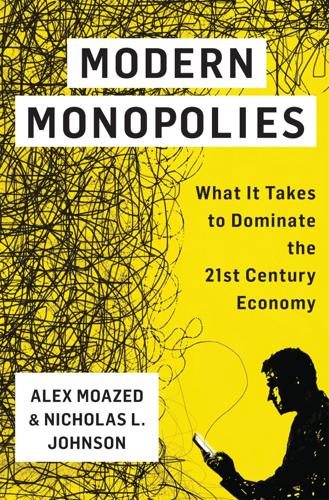
Modern Monopolies: What It Takes to Dominate the 21st Century Economy
by
Alex Moazed
and
Nicholas L. Johnson
Published 30 May 2016
And so, before long, businesses were forced to create “bring your own device” (BYOD) policies that allowed employees to pick their own phones. Not surprisingly, employees increasingly asked their companies for iPhones. For RIM, the bad news didn’t stop there. The iPhone’s runaway success led to the entrance of another would-be competitor. On November 5, 2007, Google unveiled its Android operating system for smartphones. As Andy Rubin, Google’s director of mobile platforms, said in his announcement, Android was “the first truly open and comprehensive platform for mobile devices.”10 The operating system would be open source and available to anyone (as opposed to Apple’s closed universe), a value proposition that would help to drive Android’s stratospheric growth in the years ahead.
…
Quoted in Jesse Hicks, “Research, No Motion: How the BlackBerry CEOs Lost an Empire,” The Verge, February 21, 2012, http://www.theverge.com/2012/2/21/2789676/rim-blackberry-mike-lazaridis-jim-balsillie-lost-empire. 9. Quoted in Ian Austen, “Research In Motion Eyes a Rebound,” New York Times, April 10, 2011, http://www.nytimes.com/2011/04/11/technology/companies/11rim.html?_r=0. 10. Andy Rubin, “Where’s My Gphone?,” November 5, 2007, https://googleblog.blogspot.com/2007/11/wheres-my-gphone.html. 11. Jim Dalrymple, “Apple Reaches iPhone Goal, Reports $1.14B Profit,” Macworld, October 22, 2008, http://www.macworld.com/article/1136282/appleearnings.html. 12. “Apple Reports Fourth Quarter Results,” press release, October 21, 2008, https://www.apple.com/pr/library/2008/10/21Apple-Reports-Fourth-Quarter-Results.html. 13.
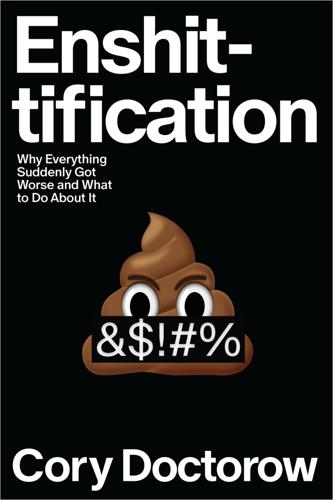
Enshittification: Why Everything Suddenly Got Worse and What to Do About It
by
Cory Doctorow
Published 6 Oct 2025
There was widespread discussion, inside the company and out, of joining with one of the trade unions that had finally started to make small inroads in Silicon Valley, after decades of near-total failure. Then came the walkouts. Nominally, the Google walkouts were triggered by a sexual abuse scandal. Andy Rubin, founder of Android, was outed as a sexual abuser of his subordinates, but worst of all was the way that Google leadership dealt with Rubin’s offenses.4 A woman who’d complained about Rubin had apparently been pressured into accepting a cash settlement that came with a nondisclosure agreement.
…
Compared with judges or (especially) juries, arbitrators are overwhelmingly more likely to find that the corporations that sign their paychecks have done nothing wrong. In the rare instances in which arbitrators find against their clients, they overwhelmingly impose weaker penalties on those companies than courts do. The Googler who was abused by Andy Rubin signed a binding arbitration waiver as a condition of working at Google—as had every other Googler. Binding arbitration waivers are common among workers in Silicon Valley and elsewhere. (The cashier who rings up your order at a drive-through has almost certainly signed one, as has the driver behind the wheel of your Uber.)

Supremacy: AI, ChatGPT, and the Race That Will Change the World
by
Parmy Olson
AI ethics was small enough that the two already knew each other. Would Gebru co-lead Google’s ethical AI research team? Gebru hesitated. She’d heard rumors through the grapevine that Google was a toxic place to work, particularly for women and minorities. There was no better example than the case of Google executive Andy Rubin. Rubin had been a rock star at Google, having cofounded its popular Android operating system, but in 2014, he quietly left the company following allegations of sexual misconduct. A few years later, an investigation by the New York Times found that Google’s management had looked into the sexual misconduct allegations and found them to be credible.
…
Fortune, July 19, 2023. Simonite, Tom. “What Really Happened When Google Ousted Timnit Gebru.” Wired, June 8, 2021. “The Social Atrocity: Meta and the Right to Remedy for the Rohingya.” Amnesty International report, September 29, 2022. Wakabayashi, Daisuke, and Katie Benner. “How Google Protected Andy Rubin, the ‘Father of Android.’” New York Times, October 25, 2018. Chapter 9: The Goliath Paradox de Vynck, Gerrit. “Google’s Cloud Unit Won’t Sell a Type of Facial Recognition Tech.” Bloomberg, December 13, 2018. “Google Duplex: A.I. Assistant Calls Local Businesses to Make Appointments.” Jeff Grubb’s Game Mess’s YouTube channel, May 8, 2018.
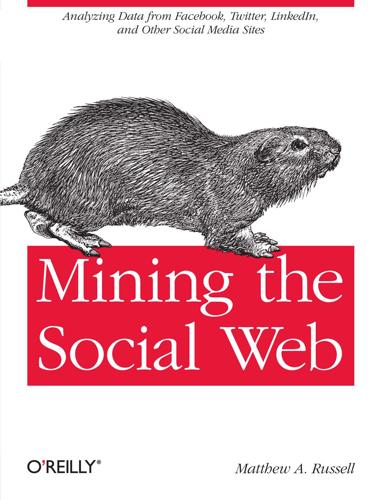
Mining the Social Web: Finding Needles in the Social Haystack
by
Matthew A. Russell
Published 15 Jan 2011
In the end, if the iPhone fails s have weaker adoption dynamics than open systems, not because Eric Schmidt be he Gov't has put in place around the open government directive. Any pushing yo >>> text.collocations() Building collocations list open source; Economist Innovation; 1/4 cup; long term; Innovation event.; Web 2.0; I'd love; free software; Annalee Saxenian; Nexus One.; came back; Cauliflower Pancakes; Eric Schmidt; Open Source; certainly true; olive oil; Andy Rubin; Mr. O’Reilly; O’Reilly said.; tech support >>> fdist = text.vocab() Building vocabulary index... >>> fdist["open"] 19 >>> fdist["source"] 14 >>> fdist["web"] 3 >>> fdist["2.0"] 3 >>> len(tokens) 6942 >>> len(fdist.keys()) # unique tokens 2750 >>> [w for w in fdist.keys()[:100] \ ... if w.lower() not in nltk.corpus.stopwords.words('english')] [u'-', u"it's", u'open', u'like', u'people', u'also', u'would', u"It's", u"don't", u'source', u'Apple', u'one', u'Google', u'government', u"I'd", u'Microsoft', u'many', u'great', u'innovation', u'make', u'think', u'companies', u'even', u'get', u'good', u'lot', u'made', u'new', u'story', u'technology', u')', u"I'm", u'big', u'going', u'long', u'love'] >>> [w for w in fdist.keys() if len(w) > 15 and not w.startswith("http")] [u'\u201c#airportsecurity', u'Caravaggiomania,', u'administrations,', u'anti-competitive.', u'apparentlycompared', u'entrepreneur-friendly.', u'entrepreneur-unfriendly.', u'flyontime.us/m/lines/security', u'government/small', u'interoperability', u'over-psychologized', u'super-impressive.', u'technology-minded'] >>> len([w for w in fdist.keys() if w.startswith("http")]) 35 >>> for rank, word in enumerate(fdist): print rank, word, fdist[word] 0 the 317 1 to 199 2 of 180 3 a 150 4 that 129 5 and 122 6 in 110 7 is 79 ... output truncated ...
…
This example shows some output from Tim’s Buzz feed that should make it pretty apparent that returning scored bigrams is immensely more powerful than only returning tokens because of the additional context that grounds the terms in meaning. Example 7-10. Sample results from Example 7-9 annalee saxenian nexus one. cafe standards certainly true eric schmidt olive oil open source 1/4 cup free software andy rubin front page mr. o’reilly o’reilly said. steve jobs tech support long term web 2.0 "mr. o’reilly personal brand came back cloud computing, meaningful use Keeping in mind that no special heuristics or tactics that could have inspected the text for proper names based on Title Case were employed, it’s actually quite amazing that so many proper names and common phrases were sifted out of the data.

Machine, Platform, Crowd: Harnessing Our Digital Future
by
Andrew McAfee
and
Erik Brynjolfsson
Published 26 Jun 2017
The technology blog Engadget commented at the time that “we only have the faintest idea why Google just bought Android, a stealthy startup that specializes in making ‘software for mobile phones.’ ” Within a few years, though, the value of a robust alternative to Apple’s platform for apps became quite clear. In 2010, David Lawee, a vice president of corporate development at Google, said it was the search giant’s “best deal ever.” And one that almost didn’t happen: Android founder Andy Rubin had actually flown to South Korea and offered his company to Samsung weeks before selling to Google. From the start, Google’s app platform and the mobile phone operating system that underpinned it were different from Apple’s. First, Android was released as open-source software and made available for free to device manufacturers, while Apple’s iOS remained available only on Apple phones (and later, tablets).
…
v=eywi0h_Y5_U. 152 “When [the iPhone] first came out in early 2007”: Walter Isaacson, Steve Jobs (New York: Simon & Schuster, 2011), 501. 152 “You don’t want your phone to be like a PC”: John Markoff, “Phone Shows Apple’s Impact on Consumer Products,” New York Times, January 11, 2007, http://www.nytimes.com/2007/01/11/technology/11cnd-apple.html. 162 Steve Jobs made a “nine-digit” acquisition offer: Victoria Barret, “Dropbox: The Inside Story of Tech’s Hottest Startup,” Forbes, October 18, 2011, http://www.forbes.com/sites/victoriabarret/2011/10/18/dropbox-the-inside-story-of-techs-hottest-startup/#3b780ed92863. 162 84% of total revenue for Facebook: Facebook, “Facebook Reports Third Quarter 2016 Results,” November 2, 2016, https://investor.fb.com/investor-news/press-release-details/2016/Facebook-Reports-Third-Quarter-2016-Results/default.aspx. 163 “grand slam”: Apple, “iPhone App Store Downloads Top 10 Million in First Weekend,” July 14, 2008, http://www.apple.com/pr/library/2008/07/14iPhone-App-Store-Downloads-Top-10-Million-in-First-Weekend.html. 164 $6 billion: Daisuke Wakabayashi, “Apple’s App Store Sales Hit $20 Billion, Signs of Slower Growth Emerge,” Wall Street Journal, January 6, 2016, https://www.wsj.com/articles/apples-app-store-sales-hit-20-billion-signs-of-slower-growth-emerge-1452087004. 165 “Jobs soon figured out”: Isaacson, Steve Jobs, 501. 165 Facebook’s offer to publish: Henry Mance, “UK Newspapers: Rewriting the Story,” Financial Times, February 9, 2016, http://www.ft.com/intl/cms/s/0/0aa8beac-c44f-11e5-808f-8231cd71622e.html#axzz3znzgrkTq. 166 “we only have the faintest idea”: Peter Rojas, “Google Buys Cellphone Software Company,” Engadget, August 17, 2005, https://www.engadget.com/2005/08/17/google-buys-cellphone-software-company. 166 “best deal ever”: Owen Thomas, “Google Exec: Android Was ‘Best Deal Ever,’ ” VentureBeat, October 27, 2010, http://venturebeat.com/2010/10/27/google-exec-android-was-best-deal-ever. 166 Android founder Andy Rubin: Victor H., “Did You Know Samsung Could Buy Android First, but Laughed It Out of Court?” phoneArena.com, February 16, 2014, http://www.phonearena.com/news/Did-you-know-Samsung-could-buy-Android-first-but-laughed-it-out-of-court_id52685. 167 Android had become the world’s most popular: Gartner, “Gartner Says Worldwide Smartphone Sales Soared in Fourth Quarter of 2011 with 47 Percent Growth,” February 15, 2012, table 3, http://www.gartner.com/newsroom/id/1924314. 167 88% of all smartphones: Gartner, “Gartner Says Chinese Smartphone Vendors Were Only Vendors in the Global Top Five to Increase Sales in the Third Quarter of 2016,” November 17, 2016, table 2, http://www.gartner.com/newsroom/id/3516317. 167 Microsoft, which had ambitions: Brian X.
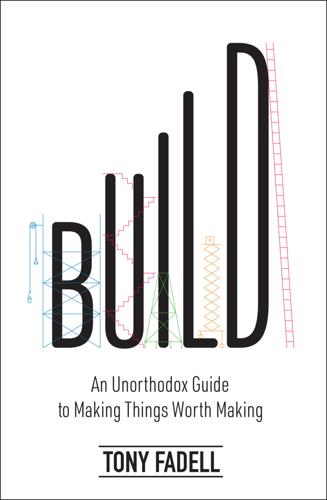
Build: An Unorthodox Guide to Making Things Worth Making
by
Tony Fadell
Published 2 May 2022
That sort of egoism can also extend way beyond individuals—many CEOs get so wrapped up in their own companies that they dismiss the competition. If it wasn’t invented here, it can’t possibly be any good. It’s the kind of thinking that kills companies, that collapsed Nokia, that toppled Kodak. It’s probably what was in Steve Jobs’s head when he refused to meet with Andy Rubin. I’d known Andy, the founder of Android, since we worked together at General Magic. And in the spring of 2005 he heard through the rumor mill that Apple was working on a phone. So he called me up. He wondered if Apple might be interested in investing in or possibly buying Android, his latest project to create an open-source phone software stack.
…
See also General Magic; iPhone; iPod; Nest Labs; Nest Learning Thermostat; Nest Protect; Philips Nino; Philips Strategy and Ventures Group; Philips Velo at Apple, xviii, 19, 55, 69, 78, 80, 81, 82, 84–86, 91, 93, 96, 117, 136, 163, 237, 303, 320, 374 Apple computer of, xv–xvi biography of, xiv–xix, 294 career of, xiv–xix failures of, xix, 3–4, 181 family of, 163, 175, 176 at Future Shape, xix as mentor, xi–xiv, xix–xx mentors of, xi, xii, 164 passion of, 68–69 at Philips, xvii, 18, 36–37, 45–46, 58, 61, 77, 81, 88, 89, 96, 125, 129–30, 209, 374 programming experience in school, xiv–xv at Quality Computers, xv startups of, xiv, xv–xix, 2, 6, 7, 46, 164, 181, 199 failure analysis of, 135 learning from, 5–6, 7, 9, 10, 13, 19, 119, 223, 253, 264, 329 startups and, 199 finance acquisitions and, 315, 316, 318, 353 product management and, 281, 285, 287 role of, 48 startups and, 182, 210 financial products, 202 Flint, Peter, 107n Free, 199 Frog, 283 Fuse Systems, xviii, 88–92, 89, 208 Future Shape, xix, 365, 374 GAP, 341 Gelsinger, Pat, 321–22 General Magic Bill Atkinson and, 2–3, 12, 27, 165 culture of, 46 Tony Fadell as engineer at, xvi–xvii, 2–3, 6, 7, 10–11, 13, 21, 24, 27, 35, 96, 129–30, 208, 327, 374 failure of, 3, 13, 18, 24, 37, 58, 90, 373 Andy Hertzfeld and, 2–3, 12, 27 launch of, 11–12 Magic CAP, 15 Pierre Omidyar and, 188 Philips as partner and investor in, 36, 37 Pocket Crystal, 1, 2, 12 private network system of, 12 problems with products of, 15 smartphone of, 130 Sony Magic Link, 12–13, 12, 15, 24, 31, 35–36, 58, 139–40 structure of, 10–11, 13 target customer of, 35–36, 58, 130 technology focus of, 15 TeleScript, 15 time constraints for, 139–40 General Magic Movie, 2n Glengarry Glen Ross (film), 296 goals of meetings, 255 moving forward with, 7, 19, 33 product development and, 128 team’s goals powering company goals, 237 Google Ads, 314, 346 all-hands meetings of, 255, 360 Alphabet created by, xix, 314 Android acquisition, 328 culture of, 313, 346, 349, 351–52, 359 disruption and, 123 individual contributors recognized by, 47 job applications with, 23 Nest acquisition of, xix, 304, 310–17, 338, 345–52, 354–55, 359–61, 371 Nest reabsorbed by, 319–20 Nest sold by, 317–19, 367 perks at, 358–59, 362 product managers and, 284 profitability of, 160 project rhythms of, 146 restructuring of, 314 review cycles of, 51 Search, 284, 314, 346 target customer of, 205 Google Facilities, 315 Google Fiber, 314 Google Glass, 16, 119 Google Nest, 55, 80, 278, 313, 314–17, 354–55 Google Store, 312, 317 Google Ventures (GV), 314, 349 Google X, 314 Grove, Andy, 322 Guenette, Isabel, 230 Gurley, Bill, 21 habituation, 262, 262n heroes, connections with, 20–25, 27 Hertzfeld, Andy, 2–3, 12, 20, 27 Hodge, Andy, 92 Hololens, 124 Home Depot, 160, 202 home stereo systems, 87 home theaters, 88, 90 honesty, in management, 44, 51 Honeywell, 117, 124–25, 164, 303–4 human resources (HR) breakpoints and, 255–56 dealing with assholes and, 72–73, 74 hiring and, 29, 215–17, 229–41 interviews and, 21, 258 legal team and, 302, 305 meetings of, 254 quitting and, 76, 81, 85, 86 startups and, 89, 182, 184, 210 team meetings and, 240, 241 team size and, 247 HVAC technicians, 124–25, 166 IBM, 121, 148 ideas chasing process, 171, 172, 173–77, 179, 373 elements of, 171 as painkillers, not vitamins, 172 problems solved by, 171, 172 research on, 171–72, 173, 174, 178 spotting great ideas, 124, 171–79, 180, 182, 327, 328 storytelling and, 172, 174, 177–78 vision for, 178 IDEO, 261, 283 IKEA, 106, 288 imposter syndrome, 37, 50 individual contributors (ICs) crisis and, 220 leadership of, 47 management contrasted with, 43 as managers, 238, 248, 251–53 perspective of, 26–27, 28, 29, 30, 31–33, 48, 58, 331 reverting to, 366 as stars, 47 trajectory in organizations, 47, 251–53 information gathering, 21 Instagram, 156, 205 Intel, 148, 189, 322 intellectual property (IP), 305, 306 internal customers, 30, 32, 233, 325 Inventec, 92 investors and investment angel investors, 173, 189–90, 192, 198–99, 200 board members and, 335, 337, 340–41 cyclical nature of, 90, 190–91 in Nest Labs, 164, 165–66, 177, 178 relationships and, 189–90, 192, 193–98, 199, 200 in Silicon Valley, 90, 192 startups and, 169, 181, 184, 189–200 storytelling and, 111, 178 iPad, 163 iPhone development of, xiv, xviii, 1, 15, 93, 122, 128, 132–33, 140–42, 142, 156, 163, 169, 175, 176, 283, 327–29, 343 glass front face of, 110, 329 launch of, 108–10, 117, 203 profitability of, 156 size of, 130, 131, 132 team of, 234 time constraints on, 140–41 touchscreen keyboard for, 110, 128–33 value of, 156, 176 iPod customer personas for, 287 defining feature of, 120, 140 design of, 263, 267–68 development of, xiv, xviii, 19, 24, 54, 55, 91–92, 91, 119–21, 133–35, 163, 165, 167, 169, 187, 202, 208–9, 268–69, 286, 347 full battery of, 269 iPod-phone model, 141 launch of, 84, 92–93, 92, 96, 108, 117, 133–34, 213 profitability of, 155 tagline “1000 songs in your pocket,” 87, 92, 112–13, 286–87 team of, 234 iPod Nano, 286–87 iPod Touch, 163 Isaacson, Walter, Steve Jobs, 84 iTunes, 119–20, 303 Ive, Jony, 267 Jobs, Steve on analogies, 112–13 on battery life, 121, 287 board of directors meetings and, 334, 339 design thinking and, 267 iPhone development, 15, 128–29, 130, 132, 133, 156 iPhone launch, 108–9 iPod development, 92, 120, 133–35, 187, 208–9, 268–69, 347 on lawsuits, 303 leadership style of, xii, 79, 82, 85, 203, 348, 358 level of detail expected by, 49 on MacWorld conferences, 147–48 on management consulting, 17 on marketing, 271, 277 Not Invented Here Syndrome, 327 as parent CEO, 329 passion of, 69, 70 on processors, 148 respect for, 329–30 Andy Rubin and, 327–28 Wendell Sander and, 24 on “staying a beginner,” 268 storytelling of, 177, 286 vacations of, 207–8 walking of, 214 Joswiak, Greg, 286–87 JPMorgan Chase, 321 Kahneman, Daniel, 171 Kare, Susan, 12 Kelley, David, 261, 283 Kickstarter, 158 Kindle, 118 Kleiner Perkins, 164 Kodak, 122–23, 327 Komisar, Randy, 164, 339–40 lawsuits, 117–18, 300, 302, 303–4 leadership characteristics of, 14, 326–27 crisis and, 221–22 decisions and, 61, 62–63 of individual contributors, 47 of Steve Jobs, xii, 79, 82, 85, 203, 348, 358 mentors and, 257 micromanagement contrasted with, 45 percentage of psychopathic traits in, 65 perspective of, 32 sitting on your idea, 63 for startups, 183 style of, 53 of teams, 37–41, 45, 46, 247 trust of, 62, 64, 330 vision for, 18 legal team contracts and, 300, 302, 305 lawsuits and, 117–18, 300, 302, 303–4 marketing and, 276, 306 outside law firms and, 300–302, 305 product management and, 287, 288, 306 role of, 24, 302–8 sales and, 295 startups and, 227 Le Guen, Sophie, 289 Letterman, David, 311 life, as process of elimination, 238, 253 limited partners (LPs), 189, 192, 198 Linux servers, 201 Lovinsky, Dina, xx Lowe’s, 160 Lutton, Chip, 117, 303, 306, 308 Macintosh, 3, 91, 108, 121, 133–34, 148, 208 McKinsey, 17 MacWorld conferences, 147 MagicBus, 24 Magic CAP, 15 Magic Leap, 16 management.

Valley of Genius: The Uncensored History of Silicon Valley (As Told by the Hackers, Founders, and Freaks Who Made It Boom)
by
Adam Fisher
Published 9 Jul 2018
But Bowser was so cute and adorable—we all loved him. Michael Stern: People brought their dogs and the parrot flew around and the trains rattled around and everybody lived there kind of 24/7. John Giannandrea: Zarko Draganic famously slept under his desk for months at a time. Zarko shared a cube with Andy Rubin. Megan Smith: You’d say “Hey Zarko, let’s meet at three o’clock.” And then he would say, “A.M. or P.M.?” Michael Stern: The kids, they just worked nonstop. They’d work in bouts. Megan Smith: That’s what the kids in Silicon Valley do in their twenties. We work like crazy and have an amazing time.
…
And then at General Magic they became the wizards and then we’re the apprentices. Phil Goldman and Zarko and Tony, Amy—we were the junior group to this senior group. Amy Lindburg: Tony went on to do the iPod and the iPhone. Steve Perlman: Phil Goldman and Bruce Leak both founded WebTV with me. Andy Rubin joined later. Amy Lindburg: And then Andy went on to do Android. And Zarko spun out the software modem—which was the first modem ever in software in the world. Michael Stern: Megan left Magic and went to San Francisco and founded PlanetOut, the first online community for lesbians. It became very successful and of course she ended up as the CTO of the United States of America.
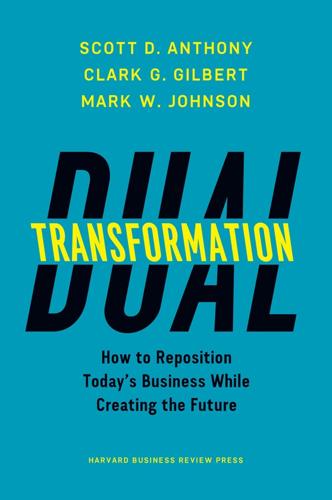
Dual Transformation: How to Reposition Today's Business While Creating the Future
by
Scott D. Anthony
and
Mark W. Johnson
Published 27 Mar 2017
Dubbed the “Jesus phone” by worshippers, the phone created a media firestorm and immediately started showing up in the hands of celebrities. In November, Google, along with a range of handset manufacturers, formed the Open Handset Alliance, powered by Google’s Android operating system. Android’s origins trace to a $50 million acquisition Google made in 2005 of a young startup that had hot technologies as well as Andy Rubin, a noted talent in the wireless space. Google’s hope was that by making it easier for users to access the internet on mobile phones, it could expand its core advertising business. In 2013, Nokia sold its handset business to Microsoft for more than $7 billion. Eighteen months later, Microsoft took a write-down of roughly $7 billion.
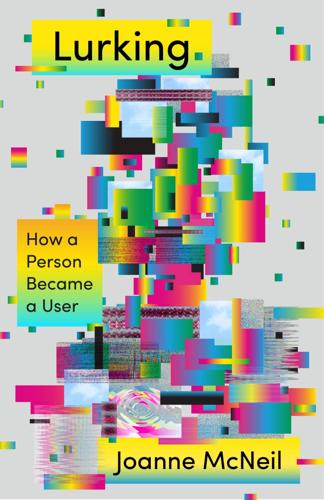
Lurking: How a Person Became a User
by
Joanne McNeil
Published 25 Feb 2020
Frank Pasquale, in a piece for Aeon (“Digital Star Chamber,” August 18, 2015), provides more context about Google results: “For example, thanks to Federal Trade Commission action in 2002, United States consumer-protection laws require the separation of advertisements from unpaid, ‘organic’ content. In a world where media firms are constantly trying to blur the distinction between content and ‘native advertising,’ that law matters.” Katie Benner and Daisuke Wakabayashi reported on Google’s issues with sexual harassment, in their eye-opening piece “How Google Protected Andy Rubin, the ‘Father of Android’” (The New York Times, October 25, 2018). For more information on the Google walkout, read Marie Hicks’s “The Long History Behind the Google Walkout” (The Verge, November 9, 2018). The artist Andrew Norman Wilson wrote an essay about his experience, “The Artist Leaving the Googleplex,” in the September 2016 issue of e-Flux Journal.
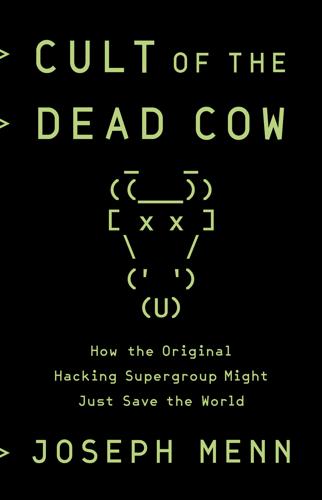
Cult of the Dead Cow: How the Original Hacking Supergroup Might Just Save the World
by
Joseph Menn
Published 3 Jun 2019
In a reasonable strategy for an underdog fighting against Apple’s iPhone, Google planned to give away the software for free and let phone companies modify it as they saw fit. But iSec realized that Google had no way to insist that patches for the inevitable flaws would actually get shipped to and installed by consumers with any real speed. iSec wrote a report on the danger and gave it to Andy Rubin, father of Android. “He ignored it,” Stamos said, though Rubin later said he didn’t recall the warning. More than a decade later, that is still Android’s most dangerous flaw. Stamos was frustrated by being called in as an afterthought, and he began to think that working in-house was the way to go.
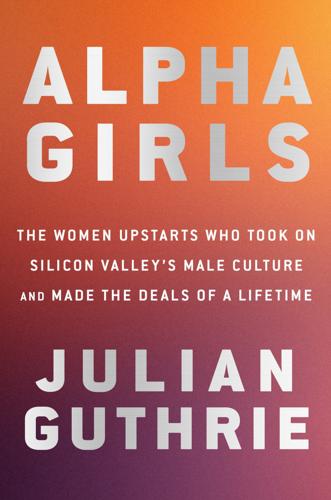
Alpha Girls: The Women Upstarts Who Took on Silicon Valley's Male Culture and Made the Deals of a Lifetime
by
Julian Guthrie
Published 15 Nov 2019
Even during the darkest days of the dot-com crash, when the small team hunkered down and pondered whether the world as they knew it was ending, Reid Dennis remained positive. One of his favorite sayings was “I don’t know many rich pessimists.” Some of their early investments from IVP X in private companies included the cybersecurity enterprise ArcSite; the search engine Business.com; and Danger, founded by Apple alumni, including Andy Rubin, who made the first always-on, Internet-connected smartphone, the Sidekick. A few of IVP X’s public market investments included the semiconductor company Artisan Components; @Road, a provider of software to manage a mobile workforce over the Internet; and Concur Technologies, a travel management and expense software maker.
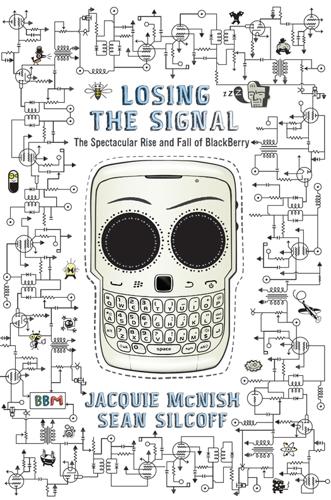
Losing the Signal: The Spectacular Rise and Fall of BlackBerry
by
Jacquie McNish
and
Sean Silcoff
Published 6 Apr 2015
U.S. carriers were projected to more than double 2005 wireless data revenues to above $27 billion that year.3 Data was Google’s DNA. Its search engine delivered websites, media, and maps to the digital world. If the world was going mobile, Google had to be there in a much bigger way. Google got into the game in 2005 by acquiring Android, a mobile device start-up co-founded by Silicon Valley innovator Andy Rubin. The acquisition was followed by the launch of two projects known to only a few Google executives. The first, code-named Dream, was a long-term effort by Rubin to build a touch-screen phone. It was nowhere near the finish line when Jobs strode onstage that day. The second project, Sooner, was in the final stages of development: it was to be a BlackBerry-like phone with a keyboard and advanced applications, including a full Internet browser and Google Maps.4 Sooner’s team understood immediately what Jobs’s virtuoso iPhone demo meant: Project Sooner was a goner.
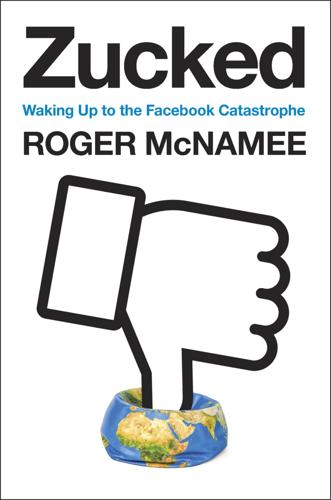
Zucked: Waking Up to the Facebook Catastrophe
by
Roger McNamee
Published 1 Jan 2019
Things got really ugly for Google in October 2018, when the company announced it would shut down its failed social network, Google+. It turns out there had been a massive hack of Google+ data, which the company covered up for months. Then, The New York Times reported that Google had paid a $90 million severance to Andy Rubin, the cofounder of Android, despite credible evidence of sexual impropriety. This and the news that other male Google executives had escaped punishment for inappropriate sexual behavior triggered a walkout by an estimated 20,000 employees worldwide. On the heels of smaller protests against Google bids on defense contracts, the walkout offers some hope that employees at internet platforms may eventually seize the opportunity they have to force change.
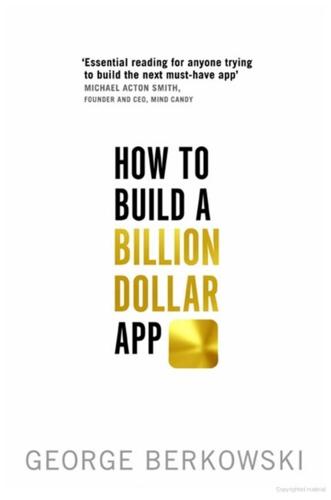
How to Build a Billion Dollar App: Discover the Secrets of the Most Successful Entrepreneurs of Our Time
by
George Berkowski
Published 3 Sep 2014
It was through the combination of all these innovations, launched at the same time, that Apple was able to set the stage for what would be a multibillion-dollar-per-year app industry. Over at Google, co-CEO Larry Page watched the iPhone launch and realised that mobile was going to become a dominant force. Since 2005 he had been talking to a developer called Andy Rubin about a rather secretive project called Android – a new mobile OS. After only a handful of meetings Page was so impressed by Rubin – and the technology – that he was ready to buy the fledging company and inject massive internal investments into the project. Rubin joined Google in July 2005 and, three years later, Google launched the first smartphone running the Android OS.
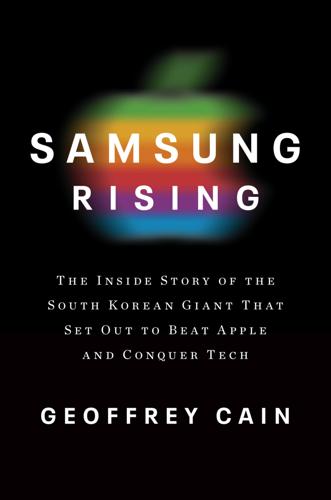
Samsung Rising: The Inside Story of the South Korean Giant That Set Out to Beat Apple and Conquer Tech
by
Geoffrey Cain
Published 15 Mar 2020
Daren, Ed, and T.J. encountered lackluster online reviews. Nor were they the only ones struggling against Samsung’s corporate culture. “Samsung worked with Silicon Valley in the same way they worked in Korea,” said Sumi Lim, a former business development manager. One such story was rampant in Samsung’s offices. Android founder Andy Rubin offered to sell his operating system to Samsung in late 2004, as he told journalist Fred Vogelstein in the book Dogfight. “You and what army are going to go and create this? You have six people. Are you high?” was basically what the Android founders were told. Rubin found himself butting up against the Korean company’s preference for working with large corporations.

Fire in the Valley: The Birth and Death of the Personal Computer
by
Michael Swaine
and
Paul Freiberger
Published 19 Oct 2014
But when it was released a few months later, somewhere around half a million iPhones were sold in the first weekend. But Apple wasn’t alone in the new market for extra-smart phones. Microsoft had been probing this market with its Windows CE and later its Pocket PC platforms for over a decade. And back in 2003, four entrepreneurs—Andy Rubin, Rich Miner, Nick Sears, and Chris White—started a company named Android to create a new operating system based on the Linux kernel and emphasizing a touch-based interface for tablets, smartphones, and the like. Two years later, the company was acquired by Google, which had been investing its huge income from its search business in various enterprises.
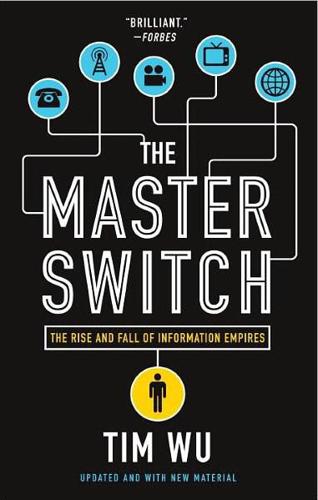
The Master Switch: The Rise and Fall of Information Empires
by
Tim Wu
Published 2 Nov 2010
Finally, on November 5, 2007, Google effectively announced the Gphone—by letting it be known that there was no such thing. In contrast with the unveiling of the the iPhone, there was no stadium event, no screaming crowd, and most important, no product. Instead, there was just a blog post entitled “Where’s My Gphone?”20 An employee named Andy Rubin wrote the following: “Despite all of the very interesting speculation over the last few months, we’re not announcing a Gphone. However, we think what we are announcing—the Open Handset Alliance and Android—is more significant and ambitious than a single phone.”* Here it was: Google’s first real foray into the world of the telephone, as distinct from the computer and the Internet.

Coders: The Making of a New Tribe and the Remaking of the World
by
Clive Thompson
Published 26 Mar 2019
Gathering data, cleaning it up, training models, and experimenting to find what works? This isn’t software engineering as they knew it. This isn’t the mental carpentry they signed up for. “I got into computer science when I was very young, and I loved it because I could disappear in the world of the computer,” Andy Rubin, the creator of the Android phone-operating system who now invests in machine-learning start-ups, told Wired. “It was a clean slate, a blank canvas, and I could create something from scratch. It gave me full control of a world that I played in for many, many years.” The idea that you’re now just tweaking a model, training, and retraining it until it suddenly works, felt—to him—oddly sad.
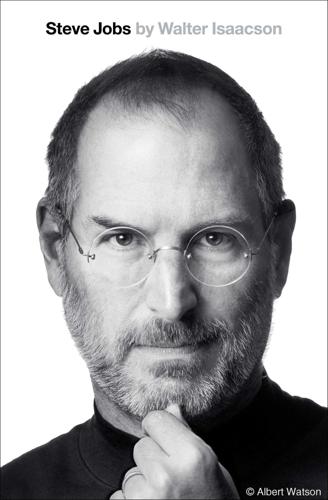
Steve Jobs
by
Walter Isaacson
Published 23 Oct 2011
Android’s touchscreen interface was adopting more and more of the features—multi-touch, swiping, a grid of app icons—that Apple had created. Jobs had tried to dissuade Google from developing Android. He had gone to Google’s headquarters near Palo Alto in 2008 and gotten into a shouting match with Page, Brin, and the head of the Android development team, Andy Rubin. (Because Schmidt was then on the Apple board, he recused himself from discussions involving the iPhone.) “I said we would, if we had good relations, guarantee Google access to the iPhone and guarantee it one or two icons on the home screen,” he recalled. But he also threatened that if Google continued to develop Android and used any iPhone features, such as multi-touch, he would sue.

The Stack: On Software and Sovereignty
by
Benjamin H. Bratton
Published 19 Feb 2016
Google's new zoo of machines represents a diverse range of physical activities that could be programmed and monitored by its platform; together these companies make robots that can run, jump, carry heavy things, fly, make things, take things apart, and manage the temperature of your house based on your daily routines. It is reported that Google's robotics ventures will be one of the occupants of the Hangar One megastructure at Moffett Field, leased from NASA's Ames Research Center in Mountain View, CA, but with the chief architect of the Android mobile operating system, Andy Rubin, initially in charge of the project, we surmise that its mission is perhaps more to link robots together on a common operating system than to engineer their bodies. Rubin has since left Google, replaced by James Kuffner, but the longer term strategy may be in place: organize and make accessible the robotic phylum.